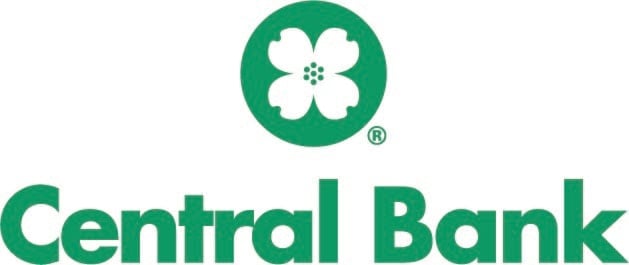Compare Second Home Mortgage Rates | Saturday, December 20, 2025
Rates are current as of December 20, 2025 12:11 AM EST
APR 6.05%
-0.08% 1wAPR 5.46%
-0.08% 1wAPR 6.54%
-0.10% 1wShow details
The Nerdy headline
Farmers Bank of Kansas City lets you browse rates and apply online, but branches are Kansas-only. Get discounts by using the bank’s partner real estate network.
Home loans overall
NerdWallet rating
4.5
- Displays customized rates, with fee estimates, without requiring contact information.
- Offers home equity loans and lines of credit.
- Mortgage origination fees are on the low side compared to other lenders, according to the latest federal data.
- Doesn’t offer government-backed FHA or USDA loans, or adjustable-rate mortgages.
- Home renovation loans are not available.
- Mortgage rates are on the high side compared to other lenders, according to the latest federal data.
Show details
The Nerdy headline
Tomo’s online rates comparison tool is among the best we’ve seen for shopping rates — and both their rates and fees are competitive. While they don’t offer refinance or home equity options, the solid lineup of purchase loans could be a good fit for a wide range of home buyers, including those with credit challenges.
NerdWallet rating
5.0
- Comprehensive online rates comparison tool makes it easy to customize sample rates.
- Mortgage rates are on the low side, according to the latest federal data.
- Offers financing options for borrowers with lower credit and those without Social Security numbers.
- No refinance or home equity options.
- Loans not available in all states.
Show details
The Nerdy headline
Home loans overall
NerdWallet rating
4.5
- Offers a variety of mortgage options, including jumbo loans, and FHA and VA loans.
- Offers home equity loans and lines of credit.
- Displays customized rates, with fee estimates, without requiring contact information.
- Doesn’t offer mortgages in all 50 states.
- Home renovation loans are not available.

NMLS#1880338
APR
7.02%
APR
7.02%
Interest rate
6.99%
Est. mo. payment
$2,659/mo
Total fees
$1,248
Next Door Lending is a wholly-owned subsidiary of NerdWallet
Show details
The Nerdy headline
Next Door Lending, a mortgage broker, offers expert assistance shopping for and closing a loan, as well as specialty loans at competitive rates. Mortgages are not available in every state.
- Offers a variety of loan types, including first-time buyer programs and loans for self-employed borrowers.
- Real-time rate quotes available while working with a broker.
- Responsive customer service.
- Competitive pricing often available, especially for non-traditional borrowers.
- Does not publish interest rates online.
- No mortgage mobile app.
- Loans are not available in every state.
Show details
The Nerdy headline
Midwest-rooted Central Bank offers an online application, which you can track via mobile app. But you’ll have to contact the bank for mortgage rates.
Home loans overall
NerdWallet rating
4.0
- Among the best when it comes to online convenience.
- Offers a full selection of mortgage types and products, including jumbo, home equity, and government loans.
- Claims to offer preapproval within 24 hours of loan application.
- You'll have to complete a loan application to see mortgage interest rates.
- Bank branch locations limited to the Midwest.
- Does not offer home equity lines of credit.
Show details
The Nerdy headline
First Federal Bank stands out for its exceptionally low interest rates and its emphasis on government loans. Most likely to appeal to borrowers shopping for low rates and fees.
Home loans overall
NerdWallet rating5.0
- Strong experience in FHA and VA lending.
- Average mortgage rates are on the low side, according to the latest federal data.
- Minimum credit score requirement of 580 for some loans, which is lower than some competitors.
- No mobile app.
- Home equity lending is not a priority.
- Does not offer renovation loans, but does offer construction loans.
Show details
The Nerdy headline
Simplist is an online marketplace of mortgage lenders; human guidance is optional. You’ll make payments to a loan servicer, not to Simplist. Loans are not available in every state.
Home loans overall
NerdWallet rating
4.5
- Loan origination process can be completed online.
- Offers government-backed FHA and VA loans.
- Offers module that compares mortgage rates among other lenders.
- Offers loans in many states and Washington, D.C., but not nationwide.
- Does not offer home equity loans or lines of credit.
Show details
The Nerdy headline
NBKC stands out for its attractive interest rates and fees, and is primarily an online lender — though its app does not have mortgage features and chat support is not geared toward mortgage borrowers.
Home loans overall
NerdWallet rating4.5
- Competitive interest rates and fees.
- Offers most common loan types, as well as a handful of specialty loans.
- Payouts are available to borrowers whose loans don’t close on time.
- Customer service is only accessible over the phone for many mortgage customers.
- Does not offer renovation loans.
- Home equity products are not currently a lending priority.
See more options
About these rates: The lenders whose rates appear on this table are NerdWallet's advertising partners. NerdWallet strives to keep its information accurate and up to date. This information may be different than what you see when you visit a lender's site. The terms advertised here are not offers and do not bind any lender. The rates shown here are retrieved via the Mortech rate engine and are subject to change. These rates do not include taxes, fees, and insurance. Your actual rate and loan terms will be determined by the partner's assessment of your creditworthiness and other factors. Any potential savings figures are estimates based on the information provided by you and our advertising partners.
Explore historical mortgage rate trends
See how rates have changed over time to understand past patterns and economic fluctuations

Historical timeline
Loan purpose
Loan type
National average 6.05%
Today's average mortgage rates
| Product | Interest rate | APR |
|---|---|---|
| 30-year Fixed | 6.05% | 6.05% |
| 30-year Fixed FHA | 6.12% | 6.86% |
| 30-year Fixed VA | 5.47% | 5.62% |
| 20-year Fixed | 5.93% | 5.94% |
| 15-year Fixed | 5.44% | 5.46% |
| 10-year Fixed | 5.50% | 5.51% |
| 3-year ARM | 8.19% | 7.46% |
| 5-year ARM | 6.11% | 6.54% |
| 7-year ARM | 6.20% | 6.52% |
| 10-year ARM | 6.05% | 6.05% |
Accurate as of 12/19/2025.
Data source: ©Zillow, Inc. 2025. Use is subject to the Terms of Use
Today's mortgage rates | Saturday, December 20, 2025
What to Know About Second Home Mortgage Rates



Holden Lewis
Kate Wood
Jeanette Margle
What is a second home mortgage?
- It's a single-family residence where you stay for some portion of the year.
- You have exclusive control over it, deciding who stays there, when and for how long.
- It's suitable for year-round occupancy.
- It's not a timeshare, nor does a management company control occupancy.
- You don't rent it out year-round, and you don't use any rental income to qualify for the mortgage.
How to find today's second home mortgage rates
How second home mortgages are different
Using home equity to buy a second home
Learn more about financing second homes:
More mortgage tools and resources
Latest mortgage news and analysis
View rates by loan type or state
Get even more specific with rates personalized to your situation







